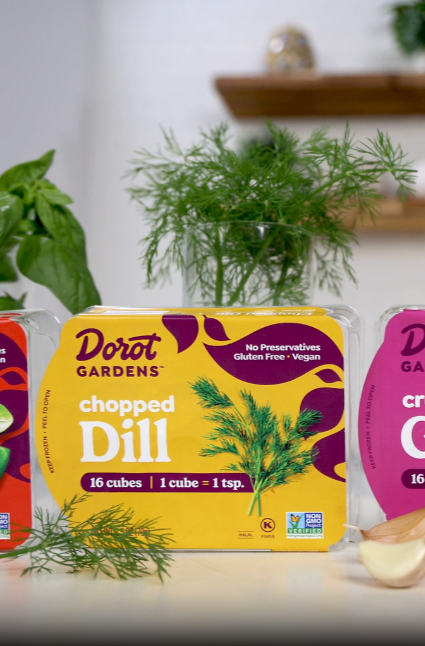Fresh dill adds a delicate, grassy zing to everything from seafood and dips to soups and salads. But if your fridge is herb-free or your dill’s turned soggy, don’t worry — there are some excellent substitutes for fresh dill options you can turn to, including pantry staples and frozen solutions that work just as well.
Let’s dive into the best alternatives and when to use each one!
1. Dried Dill Weed
The most common go-to substitute for fresh dill is dried dill weed. It’s concentrated in flavor, so you’ll want to adjust your ratios — typically, 1 teaspoon of dried dill equals 1 tablespoon of fresh.
Best for: Soups, dressings, marinades
Not ideal for: Fresh salads or dishes that rely on dill’s texture
2. Tarragon
Tarragon offers a slightly anise-like flavor and can stand in for dill in recipes that pair well with licorice undertones. It works especially well in creamy sauces and chicken dishes.
Best for: Creamy sauces, chicken, seafood
Not ideal for: Dishes where dill is the dominant herb
3. Fennel Fronds
Fennel fronds mimic the light, fresh feel of dill and add a nice herbal crunch when chopped. They’re especially useful when you’re going for a similar texture in salads or as a garnish.
Best for: Fresh salads, toppings, cold dishes
Not ideal for: Recipes that call for dill’s sharp tang
4. Basil (in a pinch)
While basil doesn’t taste like dill, it can lend freshness in a pinch. Use it in Mediterranean-inspired recipes or when making a herb-forward sauce or dip.
Best for: Pestos, salad dressings, pasta sauces
Not ideal for: Traditional dill dishes like tzatziki or pickles
5. DIY Dill Flavor Blend
If you’re crafting a dish where dill isn’t the star but you want that same essence, try blending celery seed and parsley with a bit of lemon juice. It won’t replace the exact flavor but will echo the brightness and herbal notes.
Best for: Egg salad, coleslaw, sandwiches
Not ideal for: Strong dill-focused dishes
6. Frozen Dill Cubes – A Convenient All-Year Option
When you want the flavor of chopped dill without the prep or guesswork, frozen dill cubes are a hidden gem. These pre-portioned cubes from Dorot Gardens offer a near-identical substitute for fresh dill, especially when used in cooked dishes, dips, and dressings.
Best for: Soups, sauces, dips, grain bowls
When to Use Each Substitute
| Substitute | Best Used In | Ratio (to fresh dill) |
| Dried dill | Soups, dressings | 1 tsp dried = 1 tbsp fresh |
| Tarragon | Sauces, seafood | 1:1 (start light) |
| Fennel fronds | Salads, garnish | 1:1 |
| Basil | Italian-style dishes | 1:1 (for fresh impact) |
| Celery seed blend | Egg dishes, slaws | To taste |
| Frozen dill cubes | Dips, stews, sauces | 1 cube = 1 tsp fresh dill |
Bonus Tips for Keeping the Dill Flavor Handy
- Freeze your own: Chop fresh dill and freeze it in olive oil using ice cube trays
- Grow a small pot: Dill is easy to grow indoors or on a balcony garden
- Stock frozen options: Keep frozen cubes on hand for last-minute meals
How to Store Fresh Dill (and Keep It Alive Longer)
Fresh dill is delicate and quick to wilt, but with the right storage tricks, you can stretch its life from a couple of days to over a week. Whether you picked it from the garden or brought it home from the store, here’s how to make your dill last:
Fridge Method: Herb Bouquet Style
Treat your dill like a bouquet of flowers:
- Trim the ends of the stems.
- Place the bunch in a jar with about an inch of water.
- Loosely cover the top with a plastic bag.
- Store it upright in the fridge.
Change the water every 2–3 days to keep things fresh.
Paper Towel Method: Low Space Option
Short on fridge space? Try this:
- Gently rinse the dill and pat dry.
- Wrap it loosely in a slightly damp paper towel.
- Place it inside a zip-top bag or airtight container.
- Keep it in your fridge’s crisper drawer.
Both methods help maintain moisture without turning your dill soggy — and either one can extend its life up to 10 days!
